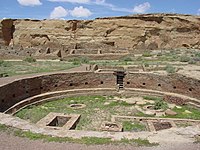
Photo from wikipedia
Abstract Macrofaunal assemblages were studied along bathymetric transects in six canyons and four adjacent open slopes of the Mediterranean Sea. The different areas investigated were located approximately along a longitudinal… Click to show full abstract
Abstract Macrofaunal assemblages were studied along bathymetric transects in six canyons and four adjacent open slopes of the Mediterranean Sea. The different areas investigated were located approximately along a longitudinal gradient at similar latitudes. Three regions were investigated: the Catalan (from 334 to 1887 m depth), the Ligurian (from 222 to 2005 m depth) and the South Adriatic margins (from 196 to 908 m depth). The analysis of the meso-scale distribution of assemblage structure and biomass showed significant differences among regions, which resulted in high values of δ-diversity. Clear differences in trophic composition were also observed, and a decreasing pattern in the individual body size of macrofaunal organisms moving Eastward. These patterns were apparently linked to changes in food supply, whereas macrofaunal abundance and number of taxa showed a decrease pattern with increasing water depth. When the assemblage structure was compared between canyons and adjacent open slope, a very high β-diversity was observed, indicating that the bottom topography exerted a strong effect on the assemblage characteristics.
Journal Title: Progress in Oceanography
Year Published: 2019
Link to full text (if available)
Share on Social Media: Sign Up to like & get
recommendations!